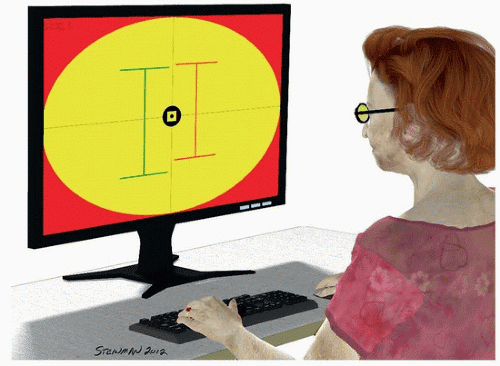ANISEIKONIA
Aniseikonia is defined as a condition wherein the images projected to the visual cortex from the two retinae are abnormally unequal in size and/or shape.
Up to 5 per cent aniseikonia is well tolerated.
Etiological types
1. Optical aniseikonia may occur due to either inherent or acquired anisometropia of high degree.
2. Retinal aniseikonia may develop due to: displacement of retinal elements towards the nodal point in one eye due to stretching or oedema of the retina.
3. Cortical aniseikonia implies asymmetrical simultaneous perception inspite of equal size of images formed on the two retinae.
Clinical types
Clinically, aniseikonia may be of different types:
1. Symmetrical aniseikonia
i. Spherical, image may be magnified or minified equally in both meridia.
ii. Cylindrical, image is magnified or minified symmetrically in one meridian.
2. Asymetrical aniseikonia
i. Prismatic
In it image difference increases progressively in one direction.
ii. Pincushion.
In it image distortion increases progressively in both directions, as seen with high plus correction in aphakia.
iii. Barrel distortion.
In it image distortion decreases progressively in both directions, as seen with high minus correction.
iv. Oblique distortion.
In it the size of image is same, but there occurs an oblique distortion of shape.
Symptoms
1. Asthenopia, i.e., eyeache, browache and tiredness of eyes.
2. Diplopia due to difficult binocular vision when the difference in images of two eyes is more than 5 percent
3. Difficulty in depth perception.
Treatment
1. Optical aniseikonia may be corrected by aniseikonic glasses, contact lenses or intraocular lenses depending upon the situation.
2. For retinal aniseikonia treat the cause.
3. Cortical aniseikonia is very difficult to treat.
Tags:
Optical term

